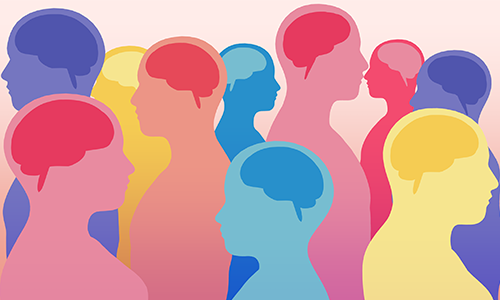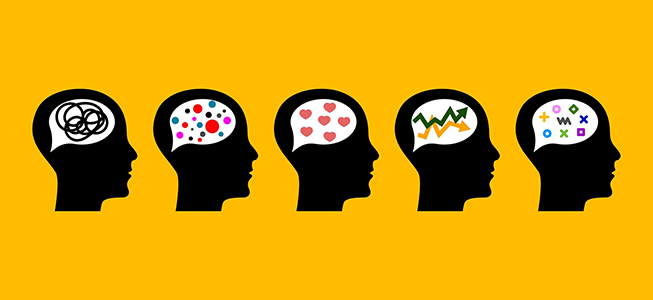Diversity in education is an important topic that has gained increasing attention in recent years. In a world that is becoming increasingly interconnected, it is important to ensure that education systems are inclusive and representative of the diverse societies that they serve.
To create an environment that welcomes neurodivergent students, it is important to make a conscious effort to create an understanding of neurodiversity and encourage valuing differences in all forms. As discussed at education conferences and events, such as the Education 2.0 Conference, educators can foster this environment in a variety of ways, from designing a curriculum to be neurodiversity friendly, to teaching tolerance of diversity. Creating this environment begins with valuing neurodivergent students, recognizing their contributions to the classroom, and learning how to support them.
What Is Neurodiversity?
Neurodiversity is a concept that emphasizes the natural variations in human brain function and behavior and recognizes that these variations are a normal and valuable part of human diversity. It is an approach to understanding and respecting individuals who have differences in neurological functioning, such as autism, ADHD, dyslexia, and other neurological differences. Education conferences and events today focus on neurodiversity as a crucial aspect of diversity. This is because of the increasing number of neurological disorders rising in the modern world, and the need to be inclusive of them in providing equal opportunities to all.
Upcoming education conferences seek to promote the neurodiversity paradigm. They believe that these differences are not disorders or deficits, but rather variations that are inherent in the human population. Advocates of the neurodiversity movement believe that these differences should be celebrated, valued, and accommodated in the same way that cultural, ethnic, and gender diversity are recognized and respected.

Neurodiversity In The US
In recent years, there has been a growing awareness of neurodiversity in US classrooms. This includes recognizing and supporting students with autism, ADHD, dyslexia, and other neurological differences. However, there is still a long way to go in terms of fully embracing and accommodating neurodivergent students in the education system.
According to the Centers for Disease Control and Prevention (CDC), approximately 1 in 54 children in the United States have been diagnosed with autism spectrum disorder (ASD). The CDC also estimates that approximately 6.1 million children in the United States (about 9.4% of children aged 2-17) have been diagnosed with ADHD. Naturally, a good number of these children require to attend schools and gain an education. For this reason, the concept of neurodiversity has gained more recognition and acceptance in the United States.
Schools and educational setups can promote neurodiversity in certain ways. These include-
- Education and Awareness:
There has been a growing effort to educate people about neurodiversity and raise awareness about the strengths and challenges of neurodivergent individuals. This includes initiatives such as Autism Acceptance Month and ADHD Awareness Month, as well as increased representation of neurodivergent individuals in media and popular culture.
- Disability Rights Advocacy:
Advocacy groups and organizations such as the Autistic Self Advocacy Network and the National Center for Learning Disabilities have been advocating for the rights of neurodivergent individuals, including equal access to education, employment, and healthcare.
- Workplace Accommodations:
More employers in the US are recognizing the benefits of hiring and accommodating neurodivergent individuals. Companies such as Microsoft, Walgreens, and Ernst & Young have implemented programs specifically designed to recruit and support neurodivergent employees.
- Research and Innovation:
Education conferences and events share ongoing research focused on understanding the neurological basis of neurodivergent conditions, and developing new treatments and interventions. Additionally, there is a growing movement towards embracing neurodiversity as a source of innovation and creativity, particularly in fields such as technology and design.
Though the US has made progress in promoting neurodiversity, there is still work to be done in terms of improving access to resources and support for neurodivergent individuals and challenging stigmas and stereotypes associated with neurodivergent conditions. Upcoming education conferences discuss these challenges in detail.

Why Is Neurodiversity Important In The Classroom?
Neurodiversity is important in the classroom because it recognizes that each student has unique strengths and weaknesses and that traditional teaching methods may not work for everyone. By embracing neurodiversity, educators can create an inclusive learning environment that allows all students to thrive.
- Promotes inclusivity and diversity:
Embracing neurodiversity helps to create a more inclusive learning environment where all students feel valued and respected. Students who are neurodivergent are an important part of the diverse student body and should be recognized and supported.
- Enhances learning:
Neurodivergent students bring unique perspectives and ways of thinking to the classroom. These students can offer different ways of approaching problems and finding solutions. Embracing neurodiversity can enhance the learning experience for all students.
- Reduces stigma:
When neurodivergent students are recognized and supported in the classroom, it can help to reduce the stigma surrounding neurological differences. This can help to promote acceptance and understanding of all individuals, regardless of their differences.
- Increases empathy:
Recognizing and supporting neurodivergent students can help to increase empathy and understanding among all students. This can help to promote a more compassionate and understanding society.
Challenges In Embracing Neurodiversity In US Schools-
There are several issues related to neurodiversity in US schools that can negatively impact the education and well-being of neurodivergent students.
- Lack of access to resources:
Schools may not have the resources or expertise to provide appropriate support and accommodations for neurodivergent students. This can result in a lack of access to assistive technology, specialized services, and other resources that can help them succeed in school.
- Narrow approach to teaching and learning:
The traditional approach to teaching and learning may not cater to the diverse needs of neurodivergent students. For example, a focus on standardized testing may not accurately reflect their abilities and potential.
- Stigma and discrimination:
Neurodivergent students may face stigma and discrimination from peers, teachers, and school administrators. This can lead to feelings of isolation, anxiety, and depression. Many education conferences and events claim this issue as one of the major hindrances in the education of neurodivergent students
- Inappropriate discipline and punishment:
Neurodivergent students may be disciplined or punished for behaviors that are a result of their neurological differences. This can result in a cycle of negative reinforcement and can impact their self-esteem and academic performance.
- Misdiagnosis and lack of identification:
Many neurodivergent students go undiagnosed or are misdiagnosed, which can lead to a lack of appropriate support and accommodations in school.
- Transition to post-secondary education and employment:
Neurodivergent students may face challenges transitioning to post-secondary education or employment due to a lack of accommodations and support. This can impact their ability to achieve their academic and career goals.
Addressing these issues requires a comprehensive approach that involves increasing awareness and understanding of neurodiversity, providing appropriate support and accommodations, and promoting a culture of inclusivity and acceptance in schools. The Education 2.0 Conference discusses the strategies to tackle these challenges in detail.

How Can US Schools Promote Neurodiversity?
To embrace equality in education, it is necessary for education systems to tackle the above challenges head-on. The strategic intervention of neurodiversity in classrooms is a key agenda in the 2023 education conference in Dubai. There are several ways that US schools can promote neurodiversity and create a more inclusive learning environment. These include:
- Providing professional development:
Schools can provide professional development opportunities for teachers and staff to help them better understand and support neurodivergent students. This could include training on teaching strategies, accommodations, and assistive technology.
- Implement Universal Design for Learning (UDL):
UDL is a framework that provides multiple ways for students to access and engage with learning materials. This can help to support neurodivergent students by providing different ways of learning that cater to their strengths and challenges.
- Offer accommodations:
Schools can offer accommodations to support neurodivergent students, such as extended time on tests, preferential seating, and access to assistive technology. These accommodations can help to level the playing field and give all students an equal opportunity to succeed.
- Embrace strengths-based learning:
Rather than focusing solely on deficits and challenges, schools can also embrace a strengths-based approach to learning. This involves recognizing and building on the unique strengths and abilities of each student, including those who are neurodivergent.
- Foster a culture of acceptance and respect:
Schools can foster a culture of acceptance and respect by promoting empathy, understanding, and inclusivity. This includes teaching students about neurodiversity and encouraging them to embrace differences.
Overall, promoting neurodiversity in schools involves creating a learning environment that recognizes and accommodates the unique needs and strengths of all students, regardless of their neurological differences. By implementing these strategies, schools can help to create a more inclusive and supportive learning environment for all students.
How Can Education 2.0 Conference Help In Promoting Neurodiversity?
The Education 2.0 Conference, brings together the most renowned educationists, EdTech innovators, policymakers, and researchers, reimagines the education space, and seeks innovative solutions to the most pressing problems affecting learning and teaching on a global scale. With such a vast platform for inspirational stories, journeys, and perspectives from educators, one can learn various up-to-date practices in the educational sphere, and promote networking and collaboration among like-minded peers.

















